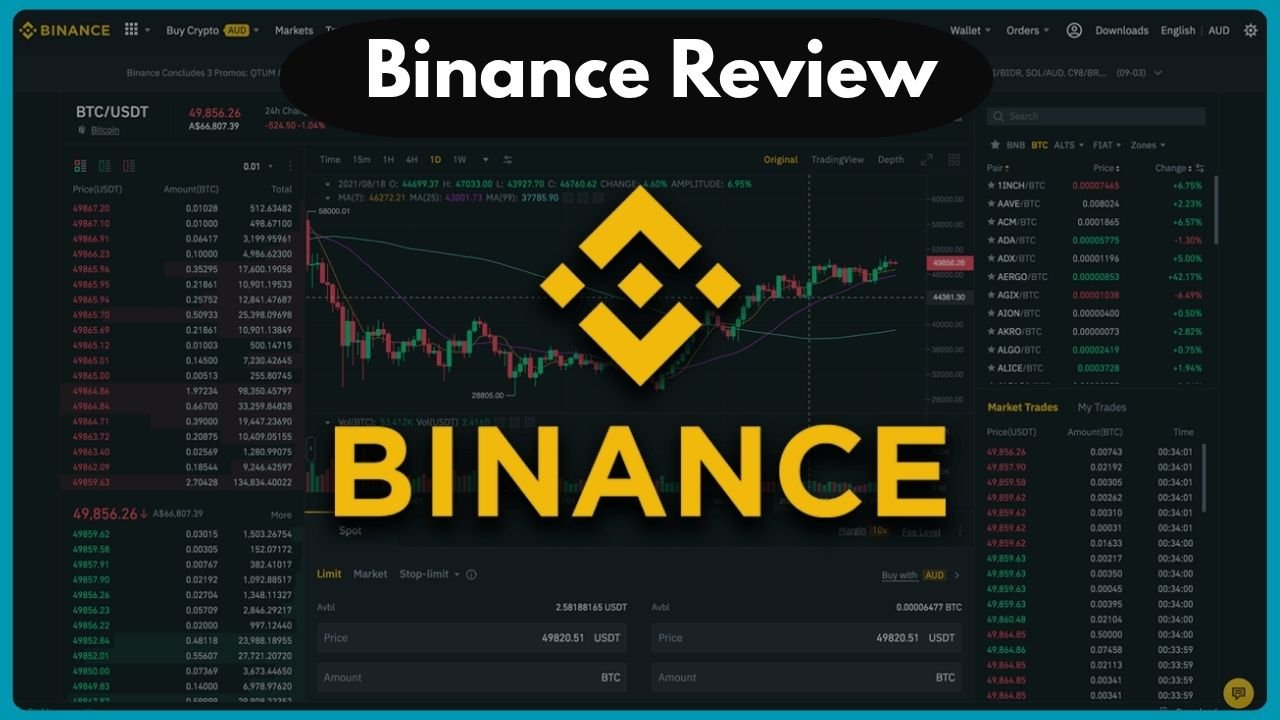If you’re thinking about diving into crypto—or maybe switching platforms—you’ve likely come across two big names: Bitvavo and Binance. These platforms dominate the European and global markets, each offering unique advantages. But when it comes down to Bitvavo vs Binance, which one is really better for you in 2025?
This Bitvavo: Binance review isn’t just another techy comparison. We’ll walk through every feature—from user interface to fees, security to features—like we’re chatting over coffee. Whether you’re a total beginner or a seasoned trader, this review helps you find the right fit for your crypto journey.
Quick Look: Bitvavo vs Binance – The Essentials
Better than Binance
Before we go deep, let’s break down the main differences:
| Feature | Bitvavo | Binance |
|---|---|---|
| User Interface | Simple, intuitive | Advanced, customizable |
| Regulation | EU-regulated, Dutch-based | Global, but with legal gray zones in some regions |
| Trading Fees | 0.25% max, as low as 0.05% for pros | 0.10% base, discounts with BNB |
| Supported Coins | 350+ carefully curated | 500+ including memecoins and new tokens |
| Deposit/Withdraw Fees | Low and transparent | Varies, some hidden in spreads |
| Ideal User | Beginners & casual investors | Experienced traders & power users |
First Impressions Matter: Interface & User Experience
Bitvavo – Simple, Smooth, and Beginner-Friendly
Bitvavo gives off “no-nonsense” vibes. Everything feels clean, intuitive, and built for humans—not crypto wizards.
When you log in, you land directly on your dashboard. No clutter, no flashy banners—just your balance and a big button to “Buy Crypto.”
Whether you’re using the mobile app or desktop version, it’s all consistent. You don’t need to re-learn the app on your phone—it mirrors the desktop experience.
Even better? Bitvavo includes a one-click Advanced Mode. If you decide to take things up a notch later (like limit orders or TradingView charts), you won’t need to switch platforms.
This simplicity makes it a great entry point for beginners or people who just want to buy and hold without fuss.
Binance – A Powerhouse That Demands Experience
Binance, on the other hand, throws you into a deep ocean of features. It’s like walking into a cockpit—you better know which buttons to press.
On mobile, there are two options:
- Binance Lite: Clean interface, good for quick buys.
- Binance Pro: Advanced charts, futures trading, derivatives, staking, and more.
The desktop version only supports the Pro mode, which can be overwhelming for newbies. There’s no “Lite” version for PC, which is a missed opportunity.
That said, if you are an experienced trader, Binance feels like a Swiss Army knife. Everything you could need is there… but the learning curve is real.
Verdict – Who Wins on User Experience?
Bitvavo shines for ease of use. It’s like the Apple of crypto exchanges—beautifully simple.
Binance is ideal if you love diving into advanced tools and don’t mind the complexity.
Cost Comparison: Fees That Actually Matter
Nobody wants to lose money on hidden fees. So let’s break down how these two platforms handle trading, deposits, and withdrawals.
Trading Fees
Bitvavo
Bitvavo keeps things clean. What you see is what you get.
- 0.25% max fee for buying/selling in EUR pairs like BTC/EUR or ETH/EUR.
- As low as 0.05% for high-volume traders using USDC pairs.
- No hidden spreads. You know exactly what you’re paying upfront.
The best part? Fees decrease based on your 30-day trading volume. Even small investors benefit from these transparent rates.
Binance
Binance boasts lower headline fees, starting at:
- 0.10% Maker/Taker fees on standard spot trading.
- Up to 25% off if you pay with BNB (Binance Coin).
- VIP system gives more discounts the more you trade.
But here’s the kicker: On Binance Lite, the fees are baked into the spread. That means you don’t always know what you’re paying. It’s not ideal for people who want control and clarity.
Verdict – Which is Cheaper?
Bitvavo takes the cake for transparent, beginner-friendly pricing. Binance can be cheaper if you know how to use its discount system, but for most users, the clarity and fairness of Bitvavo’s fee structure is more appealing.
Deposit & Withdrawal Fees: The Hidden Dealbreaker
Fees can sneak up on you when you’re transferring money. Let’s break it down:
Bitvavo
- SEPA Transfer: Free
- Credit Card: 1%
- PayPal: 2%
- Crypto Withdrawals: Just network fees, no added markup
- Bank Withdrawals (SEPA): Free
Simple and very EU-friendly.
Binance
- SEPA Transfer (via AdvCash): ~€1
- Credit Card: Up to 1.8%
- Withdrawals in Fiat: Vary depending on the method
- Crypto Withdrawals: Network fees, plus possible hidden charges depending on coin and region
Verdict – Who Makes It Easier?
Bitvavo wins again, especially for EU users. Free SEPA transfers, transparent crypto withdrawals, and lower overall charges make it a no-brainer if you want to avoid sneaky fees.
Crypto Selection: 350+ vs 500+ Coins
You’re probably wondering: Does Bitvavo have enough coins? Is Binance overkill?
Bitvavo
Bitvavo lists over 350 cryptocurrencies, all traded in EUR. It covers:
- Major coins: Bitcoin, Ethereum, Solana, Polkadot, etc.
- Carefully selected altcoins: Only vetted, quality projects.
They don’t just list everything—they curate. That’s great if you want to build a solid portfolio without digging through scams or vaporware.
Binance
With over 500 cryptocurrencies, Binance is the Wild West of crypto—and I mean that in both good and bad ways.
- Includes memecoins, launchpad projects, and new tokens.
- Great for adventurous investors chasing early opportunities.
- But also includes higher-risk coins that may not have staying power.
Verdict – What’s Better for You?
If you’re just starting or want quality over quantity, Bitvavo is safer and more focused.
If you love exploring emerging tokens, Binance offers more variety and opportunity, but with higher risk.
Security & Regulation: Where’s Your Money Safer?
When your hard-earned money is on the line, security isn’t optional. So let’s talk trust.
Bitvavo – Regulated and Transparent
Bitvavo is based in the Netherlands and registered with the Dutch Central Bank (DNB). That means:
- Full compliance with European financial laws.
- Cold storage of assets.
- Insurance for user funds.
- Clear legal protection under EU law.
It’s designed with user protection in mind. You get peace of mind, especially if you’re based in Europe.
Binance – Strong Tech, But Murky Legal Ground
Binance has world-class technical security—two-factor authentication, cold wallets, and more.
But its legal status is complicated. It has faced regulatory issues in several countries and often operates in grey zones.
Depending on your region, you might not get the same legal protections as you would with Bitvavo.
Verdict – Who’s Safer?
For legal protection and peace of mind, Bitvavo is hard to beat.
Binance might have stronger tech infrastructure, but its regulatory instability can be a red flag for cautious investors.
Extra Features That Make a Difference
Beyond trading, crypto platforms today offer much more—staking, lending, cards, and other perks. Let’s see how Bitvavo and Binance stack up when it comes to extras.
Bitvavo – Clean, with a Few Solid Extras
Bitvavo isn’t trying to be the “Amazon of crypto”—and that’s a good thing. It focuses on a few useful tools:
- Staking rewards: Available on select cryptocurrencies like ADA, DOT, and ETH. You don’t need to do anything special—just hold and earn.
- Recurring buys: Great for DCA (Dollar Cost Averaging). Set and forget it.
- Portfolio tracking: Real-time overview of your crypto holdings, simple and digestible.
It’s not overloaded with features, but that’s the charm. You won’t get lost.
Binance – A Full Crypto Ecosystem
Binance is a crypto playground with everything you could imagine:
- Staking, liquidity pools, yield farming
- Binance Card: Spend crypto like cash
- Launchpad: Access to early-stage tokens
- NFT Marketplace
- Binance Earn: A basket of passive income options
- Binance Pay: Instant crypto payments
This is paradise for power users—but overwhelming if you’re not already deep into crypto.
Verdict – Features for Your Needs
Bitvavo is ideal if you just want to earn a little extra through staking or automate your purchases.
Binance wins for feature-richness, but the depth comes with complexity.
Better than Binance
Which Platform Fits Your Profile?
The right platform isn’t always about features—it’s about fit. Here’s how to decide based on your style:
Choose Bitvavo If You:
- Live in Europe and want a regulated environment.
- Prefer simple, clutter-free interfaces.
- Want to invest long-term without diving deep into technical analysis.
- Like the idea of clear, fixed fees.
- Are new to crypto or just want a safe, passive experience.
Choose Binance If You:
- Are an experienced trader looking for advanced tools.
- Enjoy playing with derivatives, margin, or futures.
- Want access to cutting-edge projects, memecoins, and NFTs.
- Like managing a complex, diversified portfolio.
- Don’t mind some regulatory uncertainty in exchange for feature richness.
Final Thoughts: Bitvavo or Binance?
Here’s the honest truth: There’s no single “best” platform. It all depends on your experience level, location, and what you want from crypto.
- Bitvavo offers a user-friendly, transparent, and regulated way to buy and manage crypto—perfect for beginners and Europeans.
- Binance gives you power, depth, and options—but also complexity and legal gray areas.
If you’re just getting started or value simplicity and trust, Bitvavo is the clear winner. If you crave depth, variety, and trading power, Binance is your go-to.
Our recommendation? Start with Bitvavo to build your foundation, then graduate to Binance if and when you’re ready for more complexity.
FAQs – Your Bitvavo: Binance Review Questions Answered
1. Is Bitvavo safer than Binance?
Yes, for users in the EU, Bitvavo offers regulated protection, clear policies, and insured funds. Binance has great security features but operates under varying legal frameworks worldwide.
2. Which platform has lower trading fees?
Both platforms offer competitive fees. Bitvavo’s fees are transparent and fixed, starting from 0.25%. Binance can go lower if you use BNB or reach VIP levels, but the fee structure is more complex.
3. Can I stake crypto on both platforms?
Yes. Both support staking, but Binance offers more options (including DeFi staking), while Bitvavo focuses on a small set of secure coins.
4. What’s better for beginners?
Bitvavo is designed with simplicity in mind. It’s easier for people who are new to crypto or just want to buy and hold without headaches.
5. Does Binance have more cryptocurrencies?
Yes. Binance lists over 500 cryptos, including smaller or newer tokens. Bitvavo offers around 350, focusing on high-quality projects.
6. Can I use both platforms?
Absolutely. Many investors use Bitvavo for DCA and basic buys, and Binance for advanced trades or early access to new coins. It’s not an either-or scenario.
7. Are deposits and withdrawals easier on Bitvavo?
Yes. SEPA transfers are free, and crypto withdrawals only incur network fees. Binance has more deposit/withdrawal methods but often adds hidden fees or spread-based costs.
8. Can I use Bitvavo outside Europe?
Bitvavo is primarily aimed at European residents. While some features may work internationally, Binance is more globally accessible.
TL;DR – What You Really Need to Know
Still unsure? Here’s a bullet-point recap:
- Bitvavo = Simplicity, regulation, transparent fees.
- Binance = Power, variety, feature-rich ecosystem.
- Beginner? Go with Bitvavo.
- Experienced trader? You’ll love Binance.
- Want to avoid hidden fees? Bitvavo is your friend.
- Need global access and altcoin diversity? Binance wins.
Final Recommendation
In the world of crypto, confidence is key. You need to trust the platform holding your money, guiding your trades, and keeping your data safe.
For most everyday users—especially in the EU—Bitvavo is the most user-friendly and transparent option in 2025. It’s built with clarity, not complexity.
But if you’re ready for deep waters, want advanced tools, and can handle a more chaotic interface, Binance remains a top-tier choice for ambitious traders.
Either way, you win—as long as you pick the platform that matches your goals.

